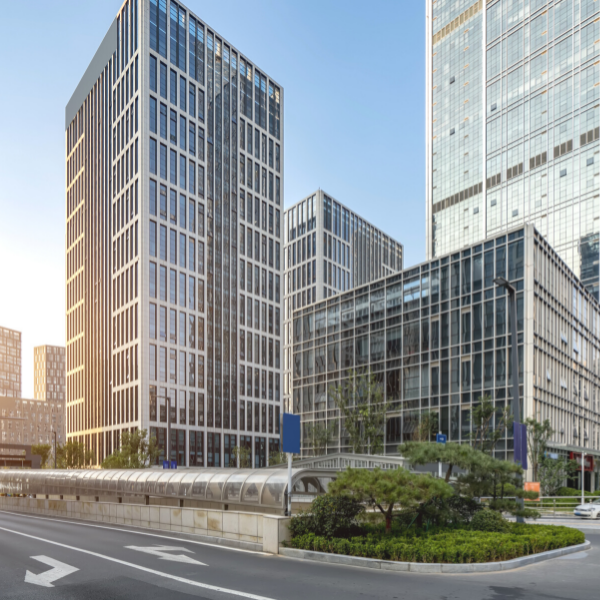The COVID-19 pandemic resulted in many once-flourishing office spaces becoming unused and abandoned. This article will discuss the feasibility of converting some of these abandoned office spaces to multifamily housing.
The Problem
The COVID-19 pandemic was a difficult period for most Americans, but specifically for landlords and property owners. In the midst of the pandemic where many Americans began working from home, business owners and employees alike began to understand that some people are able to work productively and collaboratively without having to be together in the same office space. It was quickly realized that internet-based communication technologies allowed employees to continue to interact with other individuals, to host or attend meetings with other employees, to make or observe visual presentations; and to participate in work-related webinars. As such, the dramatic reduced demand for leased office space led to a reduction in the market value of many office buildings, which depend entirely on leasing revenue. This in turn led to a rise of office building insolvency and foreclosures. Especially vulnerable to these fates are aging and deteriorating office buildings, buildings located in overbuilt areas or neighborhoods with falling real estate values and rising vacancy rates, and buildings located far from public transit.
A Possible Solution
A recent trend has emerged in which some developers are opting to convert underused or vacant commercial office space into residential communities. In some instances, office buildings are being reconfigured as hybrid buildings, with a few floors dedicated to office space, a few as residential floors, with other retail or hospitality spaces occupying the ground floor, capitalizing on a consistent foot traffic of building residents. The hope is that by converting some of these buildings, property owners can maintain or recover an adequate source of revenue and property investors can preserve some profitability through even a modest return on their investment.
Advantages
There are some advantages to converting abandoned office space to multifamily housing units. Some of the more notable advantages are:
- The converted building’s current onsite amenities such as fitness facilities, pools, or restaurants are lucrative property highlights that tenants tend to view highly favorably, and these amenities can often counterbalance tenant concerns about reduced living space.
- Many office spaces are already located in highly walkable, accessible neighborhoods or are close to large business districts and transportation. This can be very attractive for new tenants eager to reduce or mitigate their commute as more business ease back into pre-COVID attendance practices.
- By offering a more diverse mix of residential, commercial, and entertainment options through repurposing vacant office space, the formerly bustling office towers and blighted warehouse spaces that litter many Downtown, USA streets can experience revitalization from the commerce inspired by increased foot traffic and visible occupancy. These revitalizations of desolate office communities become celebrated stores of economic success for the area, which is a win-win for the developers, owners, and tenants.
Considerations
Though there are some notable advantages that come with repurposing office space into multifamily housing, there are also some important factors to consider before undertaking a building conversion:
- Zoning. Commercial property can only be converted into a residential property if zoning ordinances allow it. Local governments have regulations dictating property distinctions and, in most cases, will distinguish specific areas for residential versus commercial land use. If you are looking to make the transition, an early analysis of local laws is essential. If the property is not zoned for residential use, it may be worth considering applying for a zoning variance or requesting a rezoning designation, neither of which is guaranteed and depends on local conditions. Zoning will be the basis for converting commercial property to residential use and is a necessary first step in the conversion process.
- Building Code Constraints. There are specific requirements concerning fire and smoke protection, egress paths of travel, access to natural light and ventilation, and occupancy that are required for residential buildings. This means that developers who plan to convert these buildings must ensure that these buildings continue to adhere to any building codes. The property may require rewiring and a new layout to successfully create residential units. Upon completion of the work, a new certificate of occupancy will be needed.
- Building modifications. With the conversion process, there are bound to be some issues resulting from geometrical differences between what works architecturally for an office building versus the unique needs of residential living. In addition, electrical and HVAC systems may require significant overhauls to accommodate the demand and capacity required by residential living and the nuanced technological amenities that have become standard expectations, such as units that are cable-ready.
- Feasibility Studies. Residential rezoning of certain buildings may require additional feasibility studies for traffic, stormwater treatment, and other environmental impacts.
When In Doubt, Consult Professional Legal Counsel With Commercial Real Estate Law Experience
The considerations listed above may seem formidable and even insurmountable disadvantages, but owners and developers who have experienced and knowledgeable real estate counsel can navigate and overcome these challenges with relative ease.
McCarthy Lebit’s Real Estate and Construction practice is well suited to handle real estate transactions and development deals involving office, retail, warehouse, industrial and mixed-use properties. Our real estate attorneys can also counsel on condominium, multifamily, and residential development as the property transitions from developer to the property owner, manager or homeowner’s association.
Owners and developers interested in exploring a commercial office building hybrid or complete conversion are encouraged to reach out to book an appointment to speak with one of our Real Estate & Construction attorneys about property availability and financing options.
Author
-

Danielle G. Garson
Danielle Garson is a Principal at McCarthy Lebit with a practice focused on the areas of commercial real estate, business, corporate, and banking law. Learn more about Danielle and her practice.
